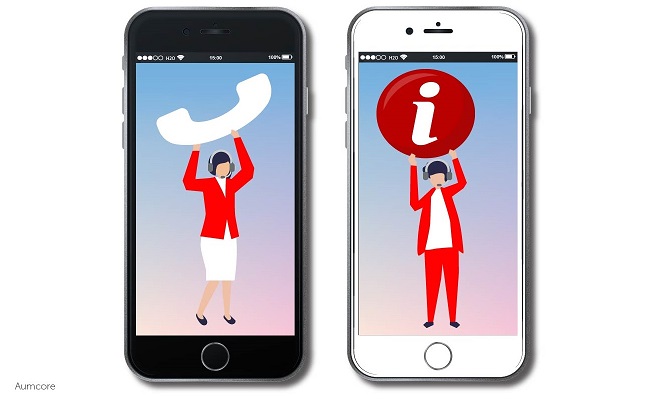Let’s start this post by getting the obvious out of the way: AI is changing the digital and user experience. Whether it’s through automation that makes business processes easier, personalization that remembers who you are and what you like, or chatbots that take care of your users when you can’t, AI is a game changer. As it happens to be, that’s exactly what we’re going to be talking about. Well, sort of—we won’t be talking about automation, personalization or chatbots. Instead, we’ll be focusing on another facet of AI that’s also making quite a big splash. If you haven’t already figured it out by reading this post’s very own title (which you’re probably doing right about now), our discussion today revolves around the likes of Alexa and Siri and how virtual assistants are affecting the customer experience.
The Rise of Intelligent Digital Assistants: Marketing in the Age of Alexa and Siri
When the world went mobile, many of us were introduced to the wonder that is the digital assistant. The thing is, we didn’t really consider them as utilitarian back then. No, for the most part, we mainly played around with them and had our fun. Then things changed. We realized we could do more with them than ask for jokes; we realized that we could literally use them as digital assistants. That was then; in the years since, their utility has only increased. Today, we can do SO much with them that the possibilities are literally endless. And from these possibilities come a myriad of predictions about what the world with them will be. More specifically, what the marketing world will look like.
And thus we arrive at our main topic for today: top 5 predictions for digital assistants and their impact on marketing.
1. Almost 8 Billion Digital Voice Assistants Will Be in Use by 2023
Yes, you read that right—an astounding 8 billion digital assistants are expected to be in use by 2023, representing an annual compound growth rate of more than 25%. With the amount of utility we get from these AI-backed assistants, it’s not hard to imagine why this is. After all, if we can control our appliances, search and do A LOT more with our voices thanks to these digital assistants, it makes sense that more and more of us are going to start using them every year.
As the marketers of today (hopefully) already know, this means that big changes are coming to pretty much all marketing endeavors. Whether you’re placing ads or trying to increase your online rankings, the rise of digital assistants is leading to things like voice search optimization, which is already a must-have service for top digital marketing agencies who were smart enough to change with the times and add this to their repertoire.
2. 30% of Web Browsing Sessions Will Be Done without a Screen by 2020

Leading off of the previous prediction is this one, which states that almost a third of online browsing sessions will be done without a screen by 2020. Wait a second, that doesn’t seem right, does it? How can we browse the internet without a screen? Simple—because browsing doesn’t mean to look at something; rather, it’s more like perusing. Because of this, every time we ask Siri to point us to the nearest coffee shop, or Alexa what the latest movies are, we’re browsing the internet.
As it happens to be, that right there is one of the biggest impacts digital assistants are bringing. By eliminating the need to use our hands or eyes to browse, we open the door to vocal interactions that can do the same even in situations when the former would be inadvisable, such as whilst driving or crossing a busy street. In terms of marketing, this means getting into your user’s head to figure out how they’re going to use this technology in their day-to-day lives, which you can leverage to uphold your strategies.
3. The Average Person Will Have More Conversations with Bots Than with Their Spouse by 2020
As the technology behind intelligent digital assistants improves, it makes sense that we’ll use them more as it does so. And if we start using them more, it also makes sense that, at some point, we’ll be conversing with them more frequently than our spouses. It may not be a happy thought for some, but it’s the truth. Look at it this way, realistically, the average working adult today spends the majority of their time without their spouse (sleeping doesn’t count). Whether it’s because they’re working or doing who knows what, more people than not spend more of their time with their phone than their spouse. And as we just saw from the predictions above, they’ll be using digital assistants more so while they’re doing that. As a marketer, it’s your job to figure out how to capitalize on that and make the most of it.
Read More About: How to Use Alexa Skills in Interactive Content Marketing
4. Voice Shopping Will Jump to $40 Billion by 2022
Voice shopping jumping to $40 billion by 2022? Now that’s a prediction most marketers and business owners can back, especially when you consider that the jump will be from $2 billion today. It’s truly amazing, isn’t it? We had digital assistants like Siri back in the early 2010s, but we weren’t really shopping with them. Things are much different today. With the proliferation of other personalities like Alexa and the Google Assistant that come with their own “skills” and “actions,” we’re seeing a BIG jump in their capabilities, which just so happens to include buying this or that. In other words, as a definite major disruptive force in retail, digital assistants are making it easier to do pretty much everything, including shop.
5. 25% of Digital Workers Will Use Virtual Employee Assistants (VEAs) Daily by 2021
Finally, the last prediction stemming from the rise of intelligent digital assistants is that 25% of digital workers are expected to be employing them daily by 2021, up from a measly 2% today. As Annette Jump, Senior Director at Gartner had to say, “we expect VEAs to be used by an increasing number of organizations over the next three years… Industries such as insurance and financial services are showing strong interest in piloting VEAs internally. We’ve also witnessed VAs being used in IT, customer service and information queries.”
Read More About: How Are Brands Using Smart Speakers for Marketing?
And as we can see from services like Amazon’s Alexa for Business that helps employees to be more productive in meeting rooms, at their desks, and even with the Alexa devices they have at home, or Nokia’s MIKA that aids engineers’ efficiency by providing voice-activated access to information, digital assistants in the workplace will soon be as commonplace as the water cooler once was.
Let’s Take a Second Look
So, how does it feel like living through the rise of intelligent voice assistants as we enter the intelligent digital assistant era? If you’re like me, you’re probably ecstatic because of all you’ll soon be able to do with them. I mean, come on—when you think of what we can already do with them now, the future definitely looks bright. With that thought fresh in our minds, let’s take a second look at the predictions we covered today:
- Almost 8 Billion Digital Voice Assistants Will Be in Use by 2023
- 30% of Web Browsing Sessions Will Be Done without a Screen by 2020
- The Average Person Will Have More Conversations with Bots Than with Their Spouse by 2020
- Voice Shopping Will Jump to $40 Billion by 2022
- 25% of Digital Workers Will Use Virtual Employee Assistants Daily by 2021





Tell us your thoughts in the comments